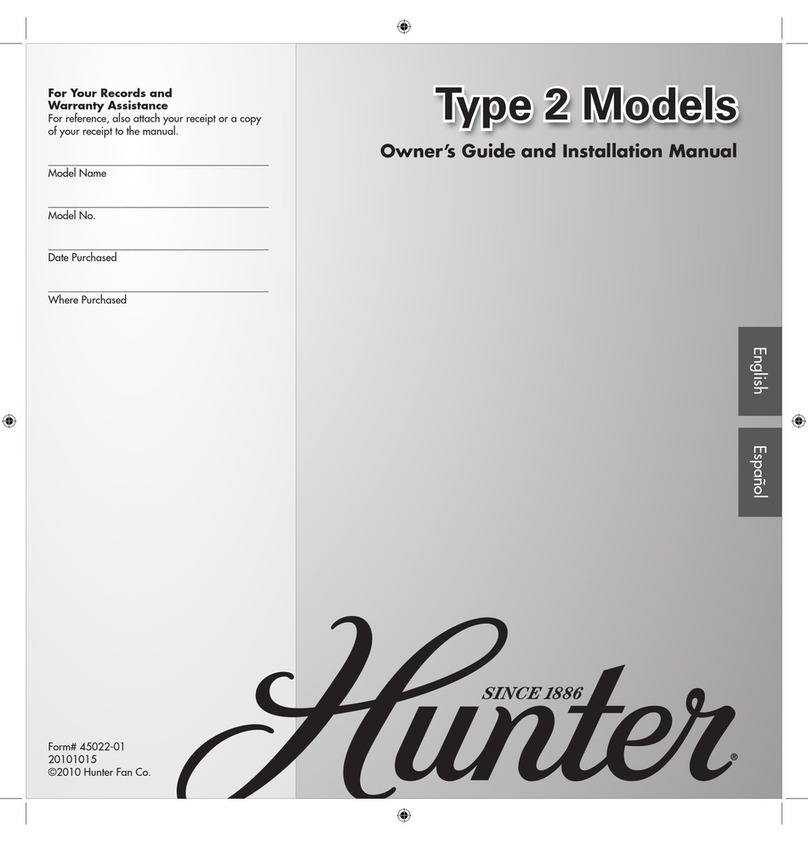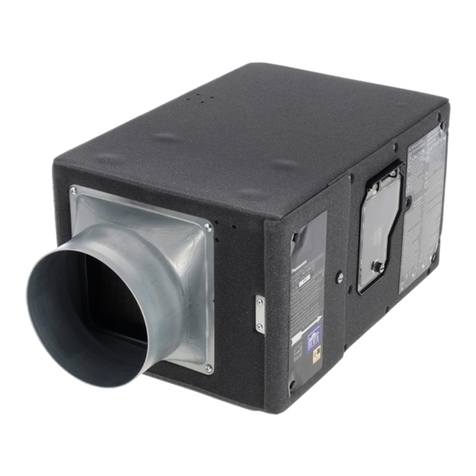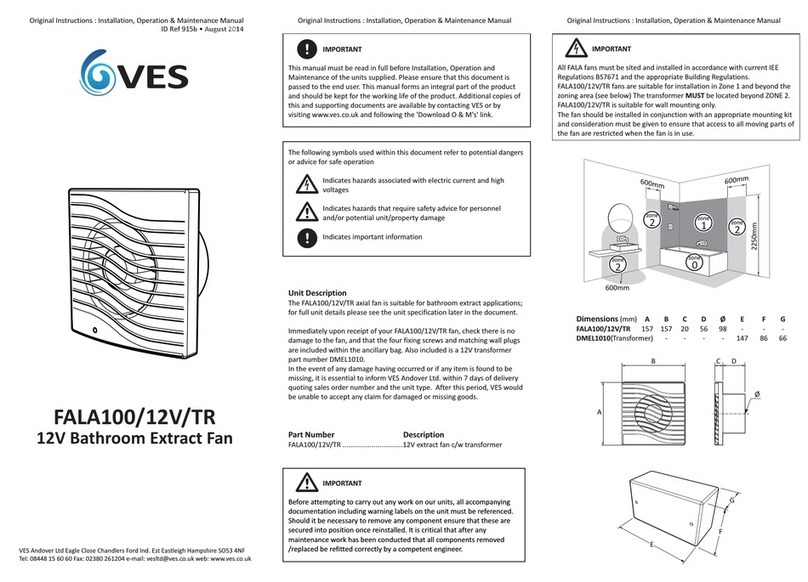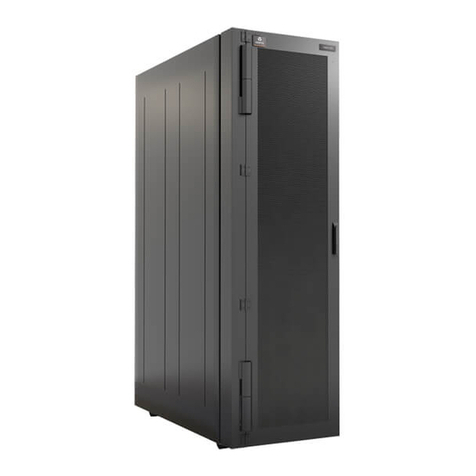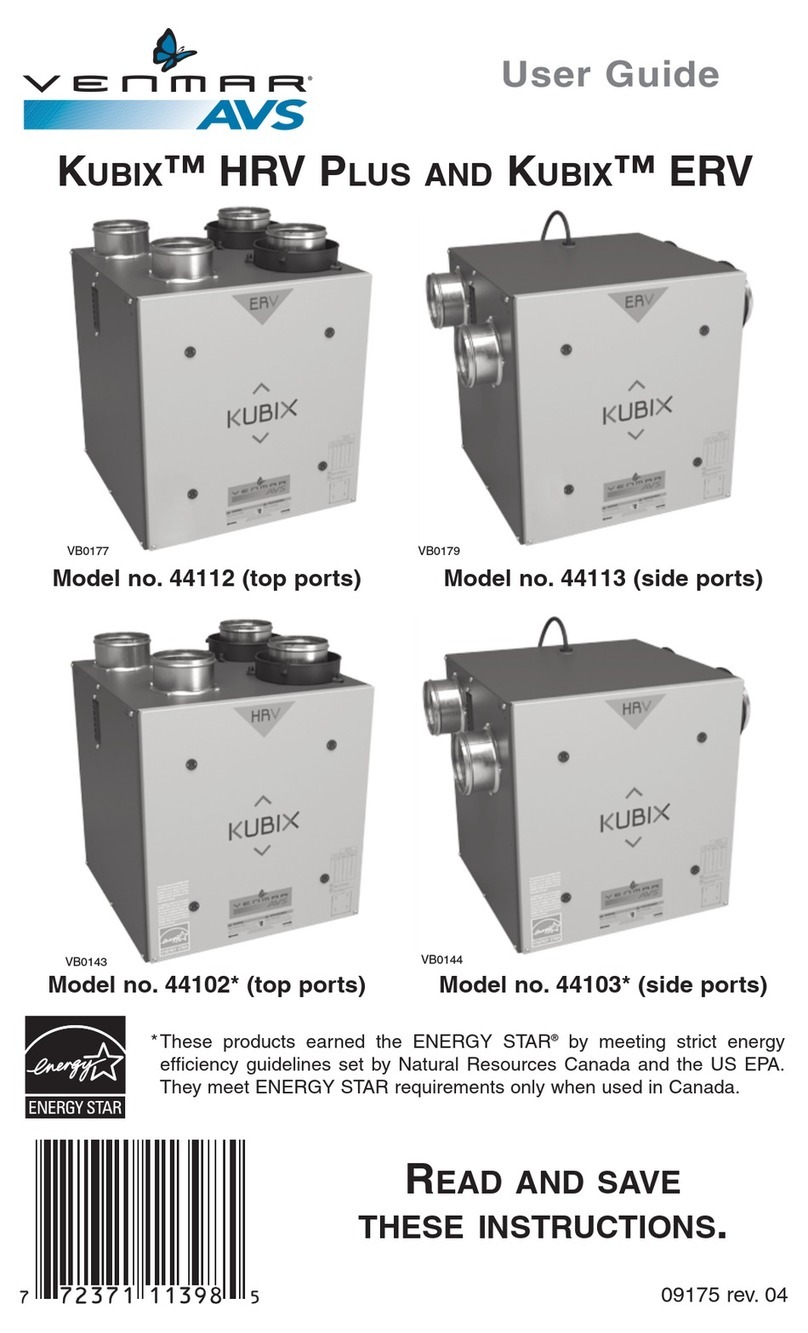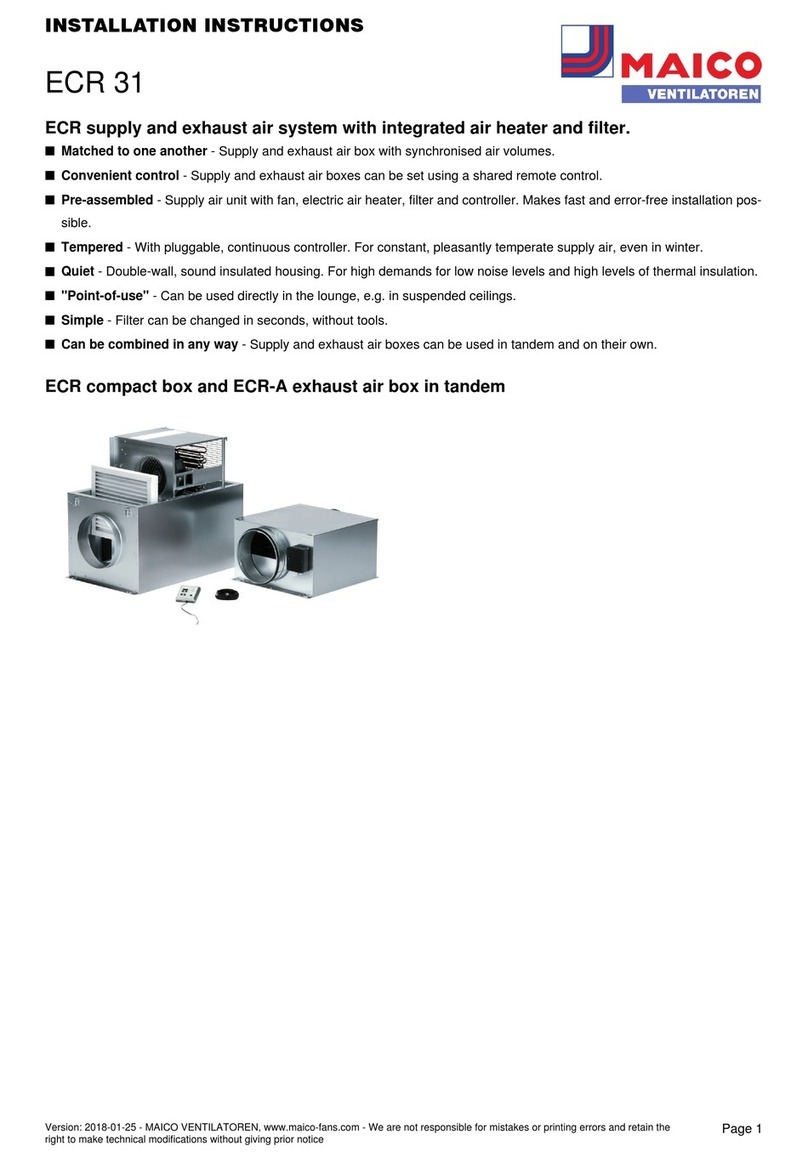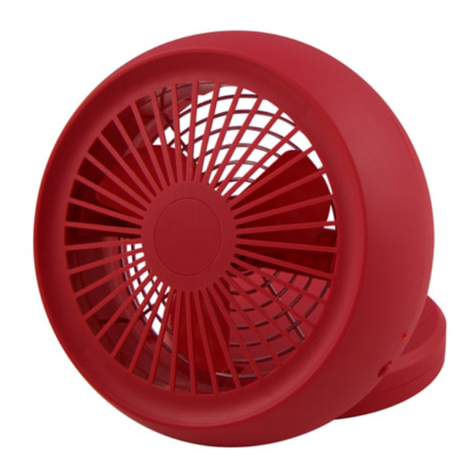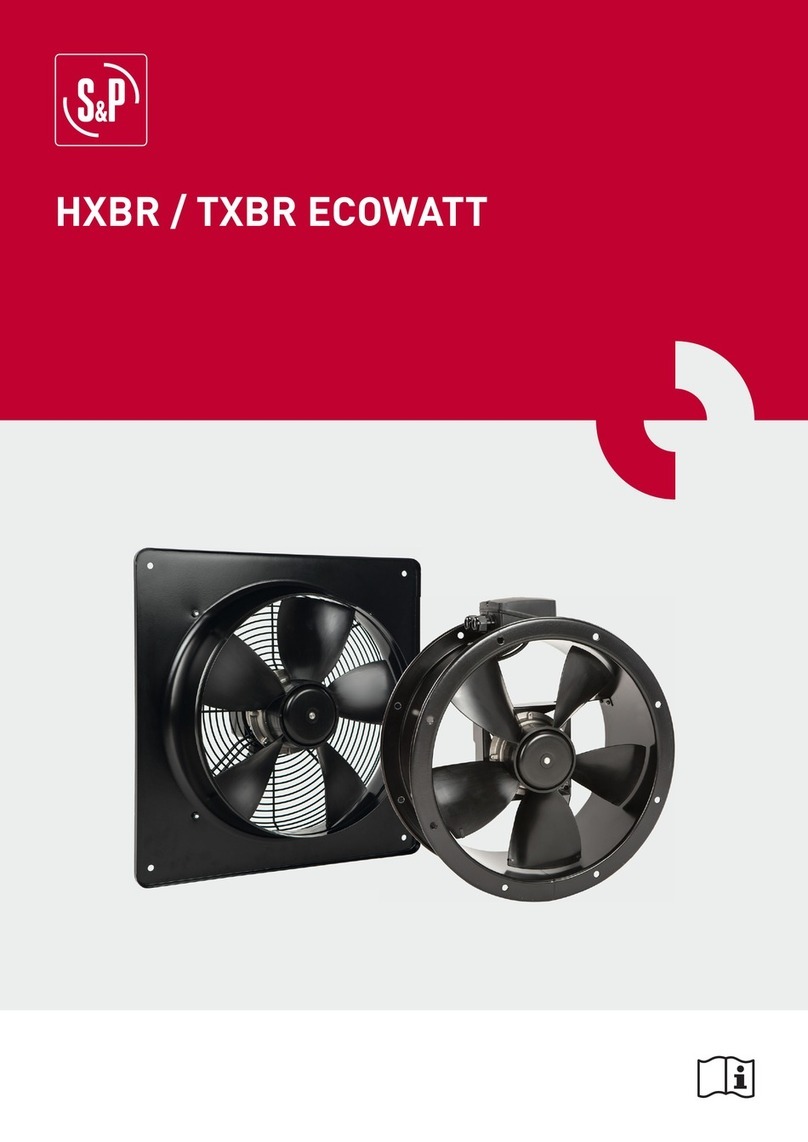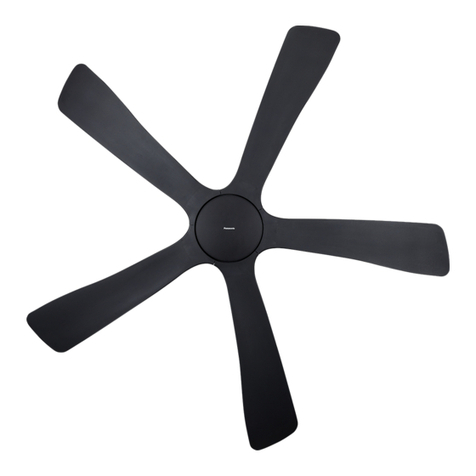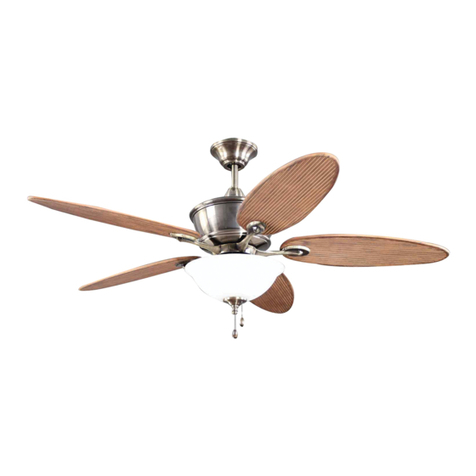
To ensure the success of the installation, be sure to read the instructions and review the diagrams thoroughly before beginning.
To avoid possible electric shock, be sure electricity is turned off at the main power box before wiring. All electrical connections
must be made in accordance with local codes, ordinances and/or the National Electric Code. If you are unfamiliar with the
methods of installing electrical wiring and products, secure the services of a qualified and licensed electrician as well as
someone who can check the strength of the supportive ceiling members and make the proper installation(s) and connections.
WARNING: To reduce the risk of fire, electric shock, or other personal injury, mount fan only on an outlet box or supporting system
marked acceptable for fan support of 35 lbs (15.9 kg) or less and use mounting screws provided with the outlet box. Most outlet
boxes commonly used for the support of lighting fixtures are not acceptable for fan support and may need to be replaced.
Consult a qualified electrician if in doubt.
Make sure that your installation site will not allow rotating fan blades to come in contact with any object. Blades should be at least
7 feet from floor.
Blades should be attached after motor housing is hung and in place. Fan motor housing should be kept in the carton until ready
to be installed to protect its finish. If you are installing more than one ceiling fan, make sure that you do not mix fan blade sets, as
each blade is part of a weighted set.
After making electrical connections, spliced conductors should be turned upward and pushed carefully up into outlet box. The
wires should be spread apart with the common conductor and the grounding conductor on one side of the outlet box, and the
"HOT" wires on the other side.
Electrical diagrams are for reference only. Light kits that are not packed with the fan must be UL listed and should be installed
per the light kit's installation instructions.
After fan is completely installed, check to make sure that all connections are secure to prevent fan from falling and/or causing
damage or injury.
The fan can be made to work immediately after installation - the bearings are adequately charged with grease so that, under
normal conditions, further lubrication should not be necessary for the life of the fan.
To operate the reverse function on this fan, press the reverse button while the fan is running.
HANGING THE FAN
1
2
3
4
5
Fig. 1
Fig. 2
Downrod
Cross pin
Hanger
ball Set screw
Remove ball from downrod by loosening set screw in the
side of the ball. Slide ball down and remove ball pin; remove
ball. (Fig. 1)
Carefully support fan body (motor) in its styrofoam packing
with the mounting collar (where the wires come out) facing
upward.
Loosen the two security set screws and remove the downrod
pin and retaining clip from the coupling on top of the motor
assembly. (Fig. 2)
Carefully feed the electrical lead wires and safety cable from
the fan through the downrod. Thread downrod into coupler
until holes align. Insert downrod pin through holes in
mounting collar and downrod; clip cotter pin through small
hole in end of downrod pin to hold downrod in place.
Tighten security set screws against downrod using a large
flat blade screwdriver to ensure a tight fit against downrod.
Tighten nuts against mounting collar.

